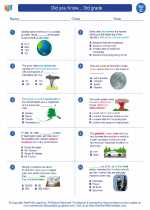Bioremediation
Bioremediation is the use of living organisms, such as bacteria, fungi, or plants, to clean up or neutralize pollutants in the environment. These organisms break down or transform harmful substances into less toxic or non-toxic forms, ultimately restoring the ecosystem to a healthier state.
Types of Bioremediation
There are several types of bioremediation techniques:
- Microbial Bioremediation: Involves the use of microorganisms, such as bacteria and fungi, to break down pollutants.
- Phytoremediation: Uses plants to absorb, accumulate, and detoxify pollutants from the soil or water.
- Biostimulation: Involves providing nutrients or other growth-promoting substances to enhance the activity of indigenous microorganisms that can degrade pollutants.
- Bioaugmentation: Introduces specific strains of microorganisms to the contaminated site to enhance the degradation of pollutants.
Applications of Bioremediation
Bioremediation can be used to clean up various types of pollutants, including:
- Oil spills
- Contaminated soil and groundwater
- Industrial waste
- Pesticides and herbicides
- Heavy metals
Benefits of Bioremediation
Bioremediation offers several advantages:
- Environmentally friendly
- Cost-effective
- Minimizes the need for harsh chemicals
- Can be applied in situ (on-site) without disturbing the environment
Study Guide
Here are some key points to remember when studying bioremediation:
- Define bioremediation and explain its importance in environmental conservation.
- Describe the different types of bioremediation techniques and their applications.
- Discuss the role of microorganisms and plants in bioremediation processes.
- Explain the benefits and limitations of bioremediation compared to traditional remediation methods.
- Give examples of successful bioremediation projects and their impact on the environment.
By understanding the principles and applications of bioremediation, we can work towards creating a cleaner and healthier environment for future generations.
.◂Science Worksheets and Study Guides Third Grade. Did you Know... 3rd grade
Study Guide Did you Know... 3rd grade
Did you Know... 3rd grade  Worksheet/Answer key
Worksheet/Answer key Did you Know... 3rd grade
Did you Know... 3rd grade  Worksheet/Answer key
Worksheet/Answer key Did you Know... 3rd grade
Did you Know... 3rd grade  Worksheet/Answer key
Worksheet/Answer key Did you Know... 3rd grade
Did you Know... 3rd grade 

 Worksheet/Answer key
Worksheet/Answer key
 Worksheet/Answer key
Worksheet/Answer key
 Worksheet/Answer key
Worksheet/Answer key

The resources above cover the following skills:
LIFE SCIENCE
Unity and Diversity
Construct an argument from evidence to explain the likelihood of an organism’s ability to survive when compared to the resources in a certain habitat (e.g., freshwater organisms survive well, less well, or not at all in saltwater; desert organisms survive well, less well, or not at all in woodlands).
Create models that illustrate how organisms and their habitats make up a system in which the parts depend on each other.